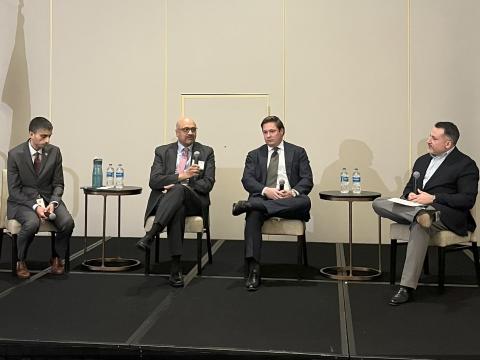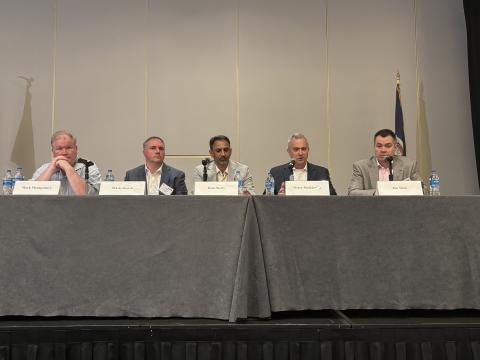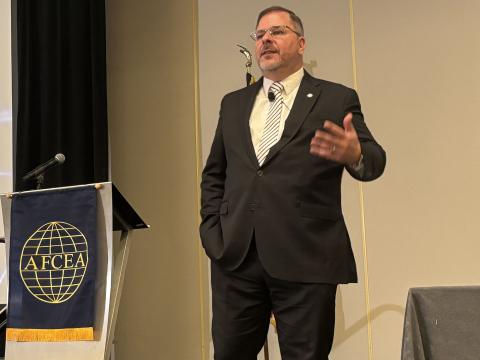Training System Models National Defense
 |
The |
The Air Force Modeling and Simulation Training Toolkit (AFMSTT) consists of a group of software applications designed to provide a range of operational environments for mission training. The software originated nearly 20 years ago as a way to train air operations center (AOC) personnel to conduct electronic warfare attacks against Soviet surface-to-air missile sites, explains Col. David Votipka, USAF (Ret.), warfighter advocate, Gestalt LLC, Orlando, Florida. Over the years, the AFMSTT was modified to provide training for all AOC activities. The toolkit is built around the Air Force’s Air Warfare Simulation (AWSM) model.
As the toolkit expanded, it was used in a variety of joint exercises as a large simulation environment. The
The AFMSTT communicates between different command and control systems to provide a representation of the outside world. The software generates the data and visuals for the AOC’s systems and mission-planning capabilities. For example, if an AOC is using a command and control tool with a data display, the AFMSTT will provide that information. The software also simulates radar feeds and other sensor data streaming into an AOC.
Although the toolkit has evolved into a system of systems instead of a simple model, some of its core algorithms, such as those used to model aircraft flight characteristics, have not changed. “The cores of the model are still valid and very much in use. What we’ve evolved over time and more recently are a lot of the interfaces,” says Theresa Zataveski, Gestalt’s AFMSTT program manager,
Other new capabilities that the team created are homeland defense scenarios. The toolkit can model commercial as well as military air traffic, and it can create no-fly zones, which the Federal Aviation Administration (FAA) can impose during a major national disaster. “We’re trying to add functionality and capability to new real-world scenarios,” she says.
An important factor was the capability to simulate the volume of commercial air traffic over the
The AFMSTT toolset is used in 14 major annual exercises, most of them with joint service components. Col. Votipka explains that the software is not a separate model so much as an added capability that supports a virtual training environment. The new airspace modeling capability was demonstrated in exercise Ardent Sentry in 2007. This event was the first use of the new civilian flight pattern capability. Zataveski says that work is ongoing to support and enhance this new application, adding that additional capabilities are being developed for delivery at next year’s Ardent Sentry.
The toolkit is being modernized under the Network Enterprise Services Infrastructure (NESI), which is a set of guidelines outlining how to manage network-centric applications. Zataveski says that many system interfaces traditionally have been proprietary. To overcome these old stovepiped systems, over the next year the program will be adding more service-oriented architecture components and data services within the applications. She explains that this modification allows the system to follow commercial best practices and interfaces. The program also is trying to evolve using common data schemas.Under this evolutionary approach, if one of the system’s underlying data components is replaced, a more modern technology can be inserted in its place.
Col. Votipka notes that the NESI guidelines are designed to modify legacy systems such at the AFMSTT and bring them up to network-centric standards. “A lot of people think: ‘We’ve got an old system. We just need to start from scratch and rewrite everything.’ There’s 20 years of corporate knowledge embedded in the code of this thing. The real thing is how to modernize it while it’s still being used, and NESI gives us the ability to do that,” he says.
The full version of this article is published in the February 2008 issue of SIGNAL Magazine, in the mail to AFCEA members and subscribers February 1, 2008. For information about purchasing this issue, joining AFCEA or subscribing to SIGNAL, contact AFCEA Member Services.




Comments